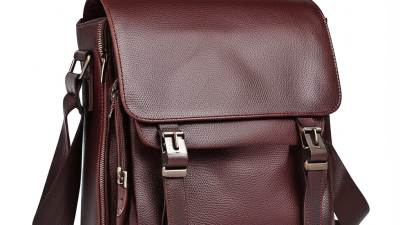Exploring the Evolution of Military Clothing: From Historical Uniforms to Modern Tactical Gear
The evolution of military clothing is a fascinating reflection of both historical context and technological advancement. From the brightly colored uniforms of the 18th century, designed for visibility and morale, to the modern tactical gear used by armed forces worldwide, military clothing has undergone significant transformations. According to a 2022 report by Global Military Clothing Market Research, the demand for advanced tactical clothing is expected to grow at a CAGR of 3.6% through 2030, driven by innovations in fabrics and design technologies that enhance performance, comfort, and durability. This evolution not only signifies changes in military strategy and warfare but also highlights the increasing importance of functionality and adaptability in military clothing. As we explore this journey from traditional uniforms to contemporary gear, we unravel the intricate relationship between military apparel and the demands of modern combat environments.

Historical Origins of Military Clothing: The Development of Uniforms Through the Ages
Military clothing has undergone significant evolution throughout history, adapting to the changing needs of warfare and the identities of armed forces. The origins of military uniforms can be traced back to ancient civilizations, where soldiers wore distinct attire to signify their status and affiliation. As time progressed, particularly during the 18th and 19th centuries, uniforms became standardized, reflecting not only the hierarchical structure within armies but also national pride. The use of color, insignia, and elaborate designs aimed to cultivate a sense of unity and morale among troops.
Tips: When examining historical military clothing, consider the materials and design elements that were available at the time—these often influenced functionality and comfort in battle. Furthermore, the sociopolitical context of different eras can provide insight into how military uniforms were not just practical but also symbolic of power.
Today's military attire, such as tactical gear, continues this tradition of evolution by incorporating modern technology and materials. Contemporary uniforms are designed for versatility and operational effectiveness, providing soldiers with the necessary protection and functionality required on the battlefield. This blend of historical significance with cutting-edge advancements highlights how the essence of military clothing has transformed yet remains grounded in its original purpose—serving the needs of those who protect and defend.
Key Innovations in Military Uniform Design: Material and Functionality Advances
The evolution of military clothing has been significantly influenced by advancements in materials and functionality, leading to the development of modern tactical gear that prioritizes both performance and comfort. Historically, military uniforms were often made from heavy wool and cotton fabrics, which, while durable, lacked versatility. With the introduction of synthetic materials, such as nylon and polyester, today's uniforms are lighter, more breathable, and faster-drying, enabling soldiers to operate effectively in diverse environments. These innovations not only enhance comfort but also improve the overall durability of the gear, allowing for extended wear during operations.
In addition to material improvements, modern military uniform design emphasizes functionality. Features such as moisture-wicking capabilities, integrated protective layers, and modular designs cater to the dynamic needs of contemporary warfare. Tactical gear now often includes specialized pockets, adjustable components, and camouflage patterns that enhance stealth and adaptability in the field. The focus on ergonomic design also ensures that soldiers have ease of movement and can carry necessary equipment without hindrance. This shift reflects a broader understanding of the importance of optimizing military attire for both protection and performance in increasingly complex and varied combat scenarios.

Transition from Traditional Uniforms to Modern Tactical Gear: A Comparative Analysis
The evolution of military clothing is marked by a significant transition from traditional uniforms designed for display and discipline to modern tactical gear focused on functionality and protection. Traditional uniforms, often rich in symbolism and historical significance, were tailored to convey a sense of pride and unity among troops. These garments, characterized by their bright colors and elaborate designs, served not only as tools of identification but also as instruments of morale. However, as warfare evolved and the nature of combat shifted, so too did the requirements for military attire.
In contrast, modern tactical gear emphasizes practicality, durability, and adaptability. With the rise of asymmetric warfare and the need for soldiers to operate in diverse environments, military clothing has transitioned to materials that offer enhanced camouflage, protection against environmental hazards, and integrated technology. Elements such as modular webbing systems, reinforced fabrics, and advanced body armor have become standard. This comparative analysis highlights how the focus has shifted from aesthetic considerations to a utilitarian approach, ensuring that today’s military personnel are equipped to face the complexities of contemporary warfare.

The Role of Technology in Shaping Contemporary Military Attire and Equipment
The role of technology in shaping contemporary military attire and equipment has evolved dramatically over the decades, reflecting advancements in materials, design, and functionality. Historical uniforms, often characterized by rigid structures and elaborate details, have given way to modern tactical gear that emphasizes mobility, versatility, and protection. Innovations such as lightweight textiles, enhanced camouflage patterns, and integrated body armor are now standard, allowing soldiers to operate more effectively in diverse environments.
In recent developments, the integration of artificial intelligence (AI) and generative technologies into military systems is redefining not only combat strategies but also the very fabric of military clothing. AI systems enhance situational awareness and decision-making processes in the field, while generative design tools provide customized solutions for gear that meets specific operational needs. This shift signifies not just an aesthetic change but a fundamental transformation in how military personnel are equipped and prepared for modern warfare, ushering in a new age where technology plays an indispensable role in safeguarding national security and operational effectiveness.
Exploring the Evolution of Military Clothing
This bar chart illustrates the adoption rate of various types of military clothing throughout history, highlighting the shifts from historical uniforms to modern tactical gear, and providing insights into the influence of technology on military attire.
Cultural Influences on Military Clothing Styles: Global Perspectives and Variations
Military clothing has evolved significantly over centuries, influenced by various cultural factors unique to each region. Traditional uniforms often reflected the societal values and norms of their respective cultures, such as the bright colors of Napoleonic uniforms representing pride and honor in European armies. In contrast, the camouflage patterns developed during the 20th century illustrate a shift towards functionality, prioritizing practicality and tactical advantage over aesthetic appeal. As cultures collide and interact, military clothing adapts, blending elements from different traditions, thereby creating unique hybrid styles.
Around the world, different nations have incorporated their local textiles and designs into military attire, further showcasing the cultural influences on these garments. For example, the incorporation of indigenous patterns in uniforms can serve to honor a nation's heritage while also fostering a sense of unity among troops. Furthermore, the globalized nature of modern warfare has led to increased collaboration and shared insights among military forces, resulting in the cross-pollination of clothing designs. This cultural exchange not only affects visual presentation but also promotes functionality that suits various operational environments, demonstrating how military attire transcends mere utility to become a reflection of the collective identity of armed forces worldwide.
Exploring the Evolution of Military Clothing: From Historical Uniforms to Modern Tactical Gear
| Era | Type of Clothing | Key Features | Cultural Influences | Notable Changes |
|---|---|---|---|---|
| 18th Century | Frock Coat | Tailored, Long, Decorative | European Aristocracy | Introduction of Epaulets |
| 19th Century | Militia Uniforms | Standardized Colors, Badges | National Pride | Shift to More Practicality |
| World War I | Battledress | Utility, Mixed Materials | Industrial Revolution | Functional Design Emphasis |
| Cold War | Combat Uniforms | Camouflage Patterns | Technological Advances | Increased Specialization |
| Modern Era | Tactical Gear | Modular, Lightweight, High-Tech | Globalization | Integration of Technology |
Related Posts
-

China Manufacturing Thrives Amidst US China Tariff Challenges with Best Escape Bags
-

How to Choose the Perfect Combat Boots for Every Adventure
-

How to Choose the Best Quick Rucksacks for Every Adventure
-

Unlocking the Future: The Ultimate 2025 Guide to Best Women's Uniform Pants Innovations
-

Exploring the Rise of Quick Rucksacks at the 137th Canton Fair in Guangzhou 2025
-

Quality Crafted Men's Shoulder Bags: Your Gateway to Global Style from China's Leading Factory
